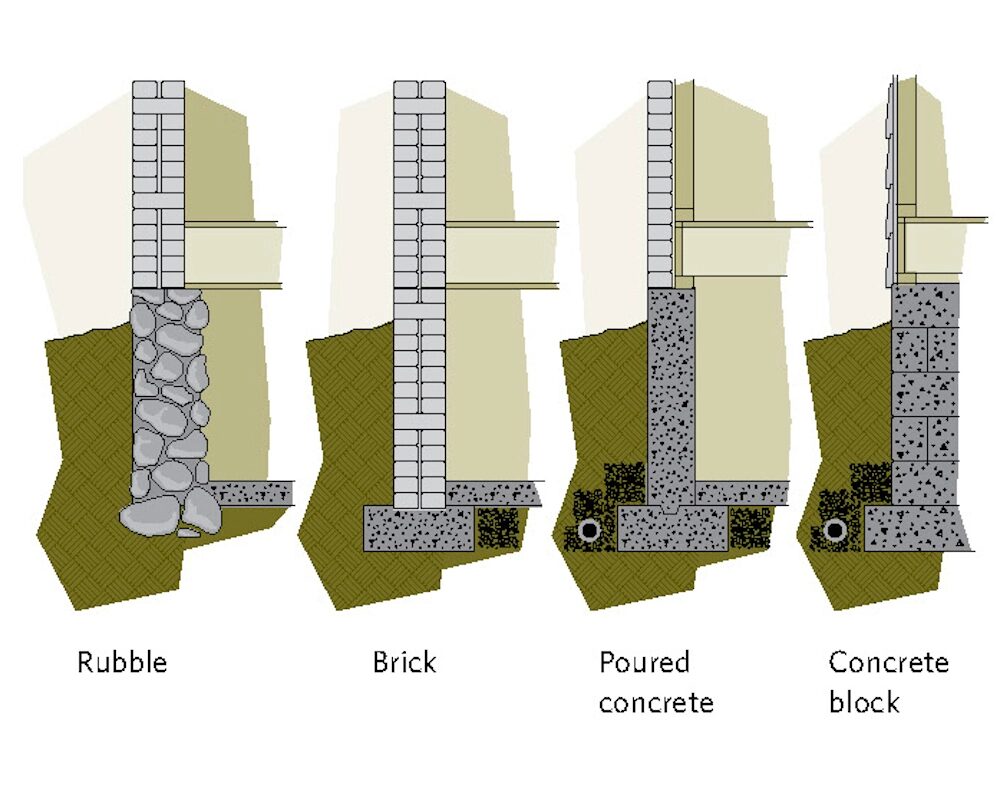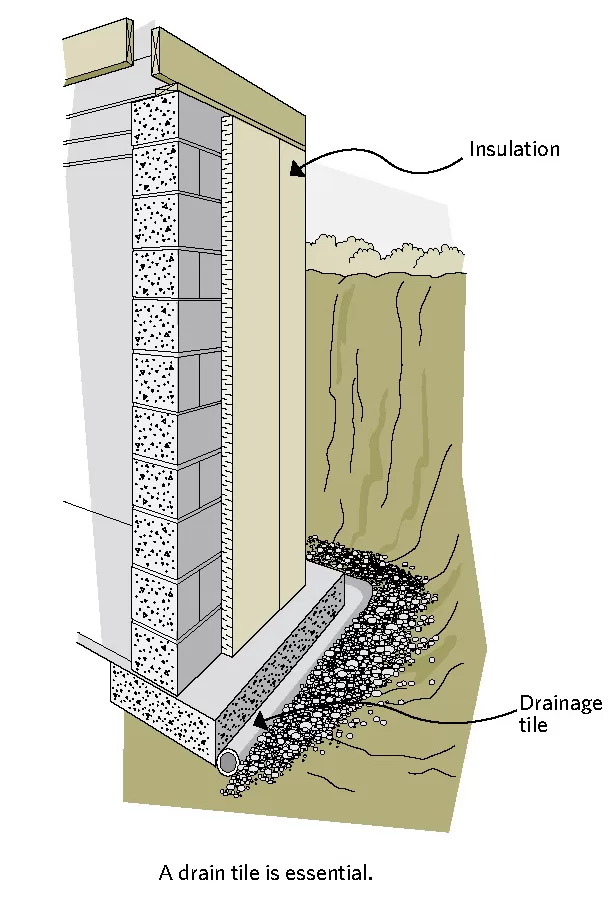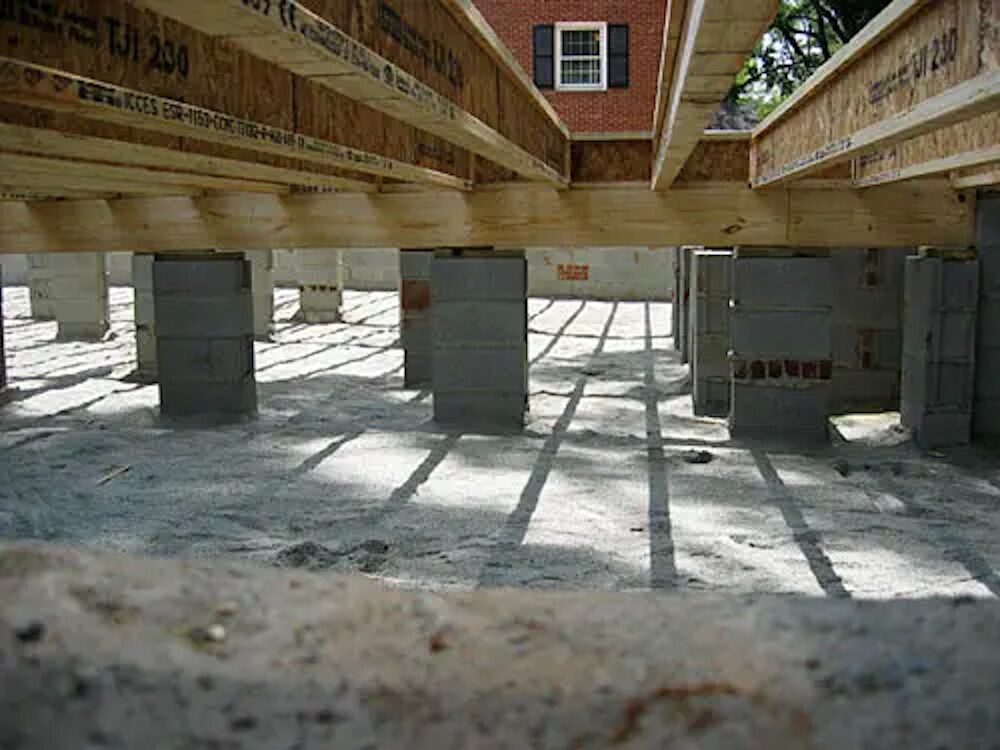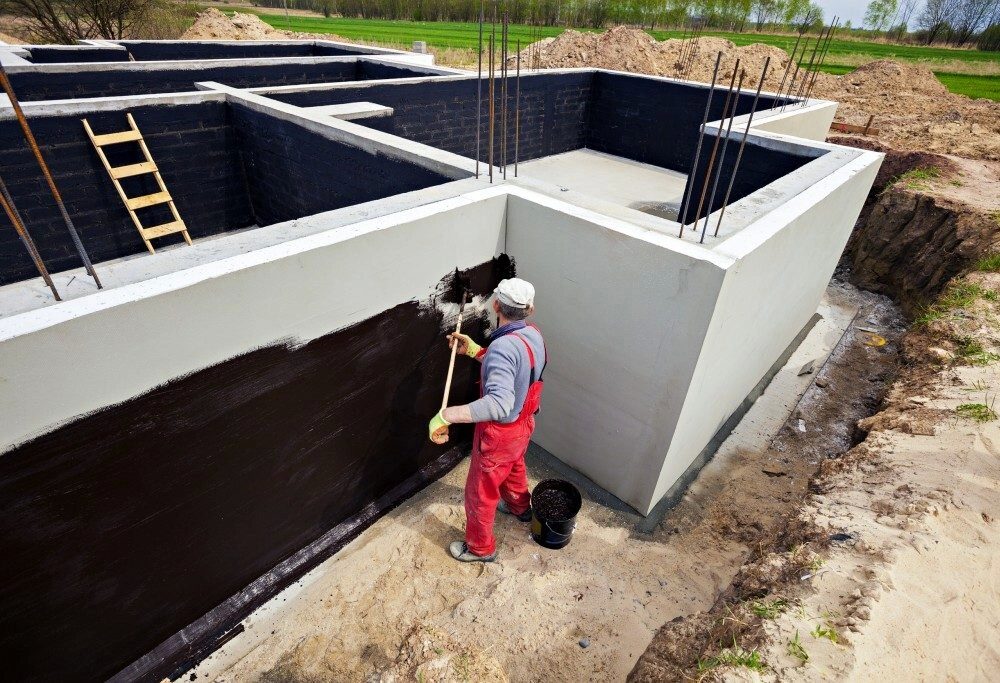
Let’s know more about the real function of “foundation”.
Many of your questions will be answered in this article such as:
What is the effect of climate condition on choosing foundation type?
What is the specific condition for build foundation in Canada?
which feature made a building foundation trustworthy?
Types of Foundation
The building structure is built from the ground up, but the foundation needs to support the loads created by the roof, walls, and floors above it. In this simplified version of an engineering diagram, the structural loads translate vertically from the peak or highest point of the roof through the external and internal bearing walls or posts and through the foundation to the footing.
Types of foundations can be classified based on the shape or method of implementation. The foundation design must be appropriate for the building’s size, weight, and load distribution. Different types of foundations, such as shallow foundations (e.g., strip footings, raft foundations) and deep foundations (e.g., piles, caissons), are used based on the building’s requirements and soil characteristics.

The whole structure is supported by the undisturbed soil on which it sits. In cold climates, the footings are required to be lower than the average frost level to avoid damage from frost heaving.
Arctic Climate, Subarctic Climate, Boreal Climate, Continental Climate, Maritime Climate, Pacific Maritime Climate, Mountain Climate but among the 7 different climates in Canada, we focus more on Continental Climate because it has the most residential area.
Don’t forget that Vegetation, Temperature Ranges, Precipitation Patterns, Elevation and Geographical Features are the most effective indicators that may change condition of your region climate.
Canada experiences varying climates, including cold winters with freezing temperatures. The foundation must be designed to withstand frost heave, which occurs when soil expands due to freezing. The depth of the foundation’s footing must extend below the frost line to prevent frost-related damage.

Different regions in Canada have diverse soil types, ranging from clay to sand to rock. Soil testing is crucial to determine the soil’s bearing capacity and potential for settlement. The foundation design should consider the specific soil characteristics to ensure stability.
Some areas in Canada are prone to seismic activity. Building codes require foundations to be designed to withstand earthquake forces, particularly in regions with a higher seismic risk.
Proper drainage around the foundation is vital to prevent water from accumulating near the structure. This helps avoid water-related issues such as soil erosion, hydrostatic pressure, and basement flooding.

In colder regions, insulating the foundation is essential to prevent heat loss and to protect against frost damage. This can be achieved through methods like installing insulated concrete forms (ICFs) or adding exterior insulation.
Radon gas is a naturally occurring radioactive gas that can seep into buildings from the ground. In some regions, radon mitigation measures are required to ensure indoor air quality and safety.
Each province and territory in Canada has its own building codes that outline specific requirements for foundation design and construction. These codes are regularly updated to incorporate the latest building practices and safety standards.
Construction projects in Canada must also consider environmental regulations, such as protecting nearby water bodies and preserving natural habitats.

To build a foundation in Canada, it is essential to work with qualified professionals, including architects, engineers, and contractors, who have knowledge of local building practices and regulations. They can ensure that the foundation meets all the necessary conditions and complies with the applicable building codes, resulting in a safe and reliable structure.
